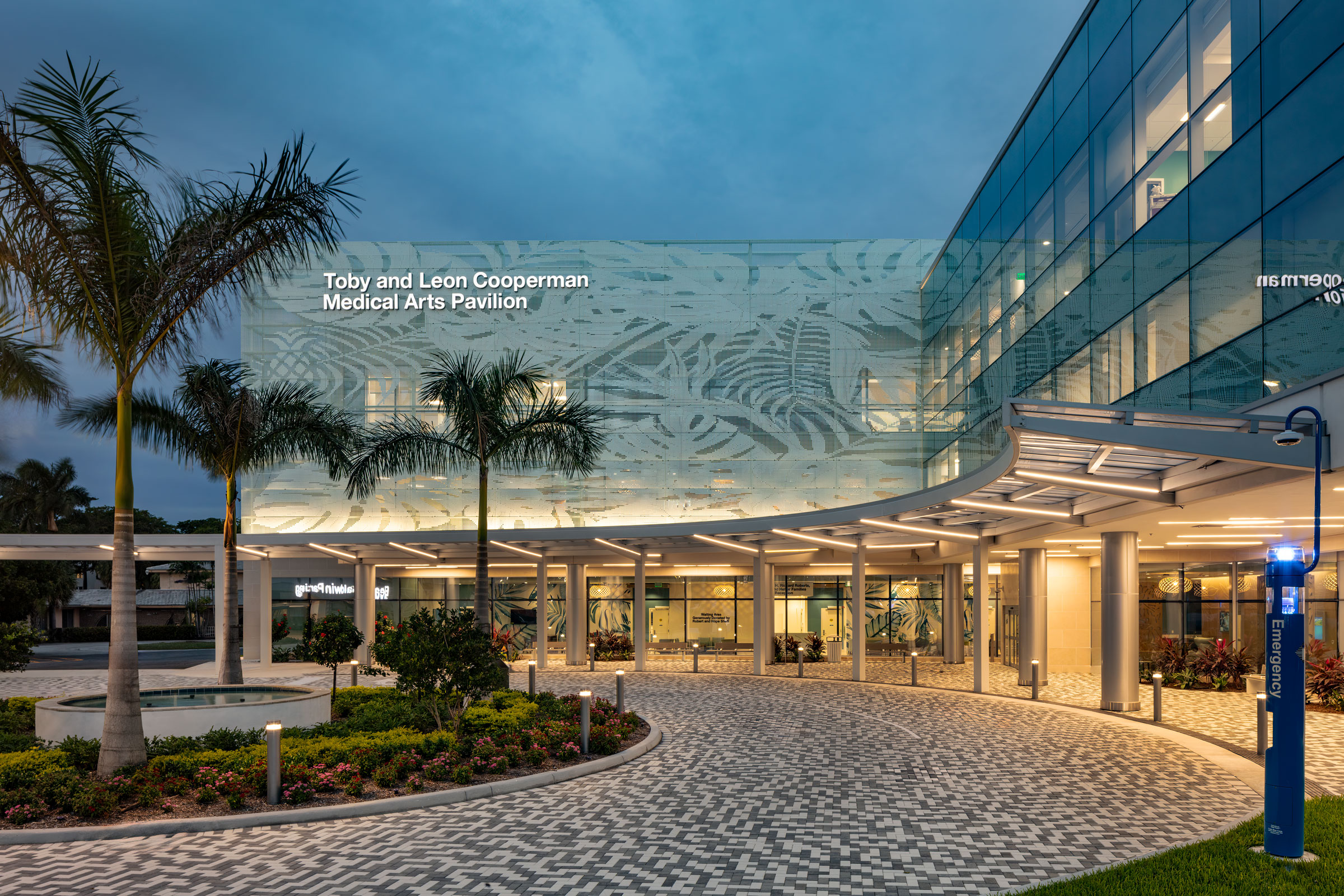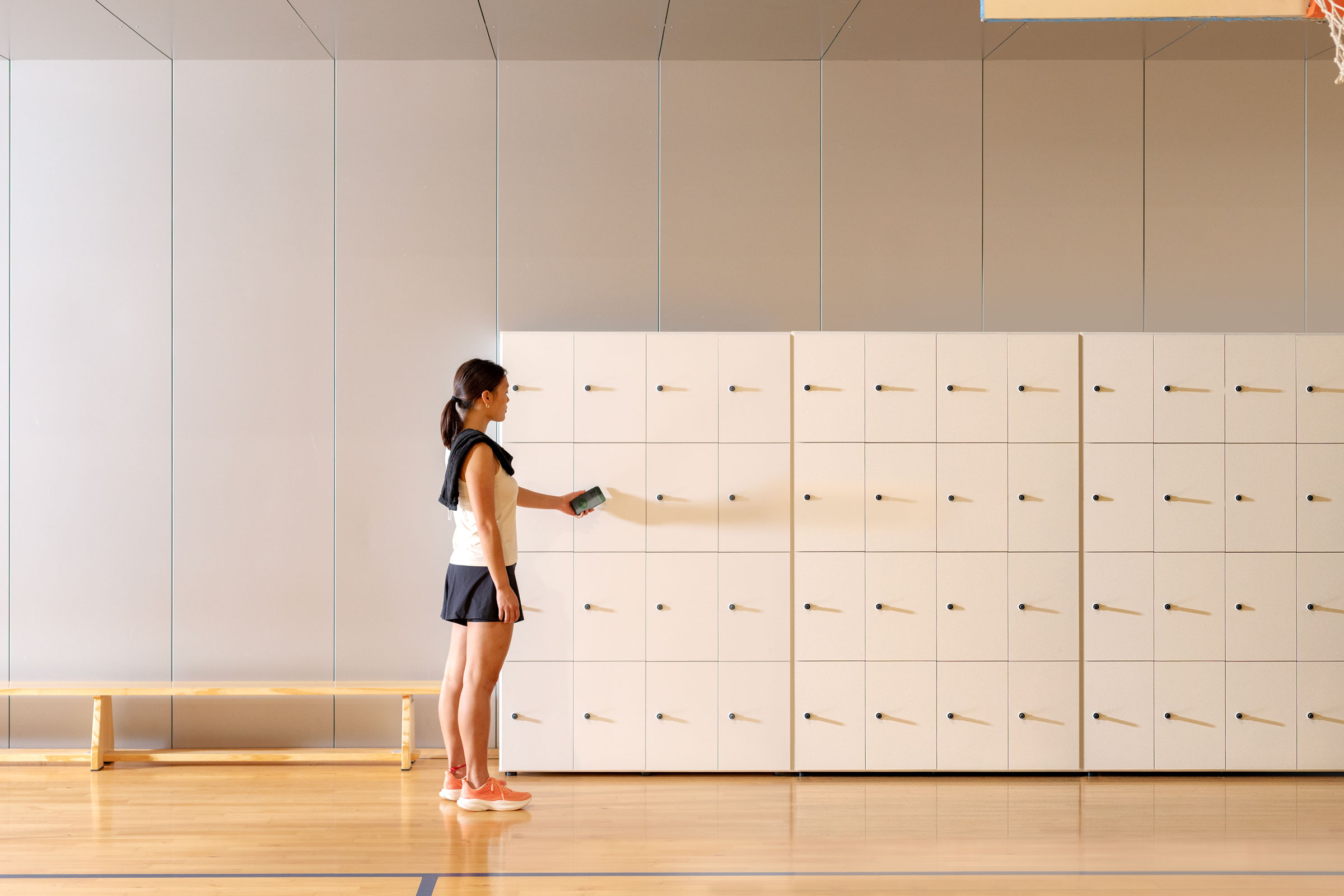Story at a glance:
- Design for the Toby and Leon Cooperman Medical Arts Pavilion in Florida was inspired by the hospitality space, aiming for an elevated patient experience.
- Comfortable waiting areas, large windows that let in natural light, and finishes reminiscent of a boutique hotel fill the NELSON Worldwide–designed project.
- Biophilic design strategies also round out the health care design to improve patient well-being.
The new Toby and Leon Cooperman Medical Arts Pavilion in Palm Beach County, Florida, sets a new standard for health care design—one where flexibility, sustainability, and patient experience converge in a space that feels less like a clinic and more like a welcoming community hub.
“This was the first large ambulatory services building on campus for our client,” says Rolando Conesa, principal at NELSON Worldwide. “They wanted to consolidate off-campus practices into one convenient location while also making it a patient-focused, easily maneuverable place. That meant easy parking, clear wayfinding, and clinics designed with ultimate flexibility.”
Flexible & Patient-Centric
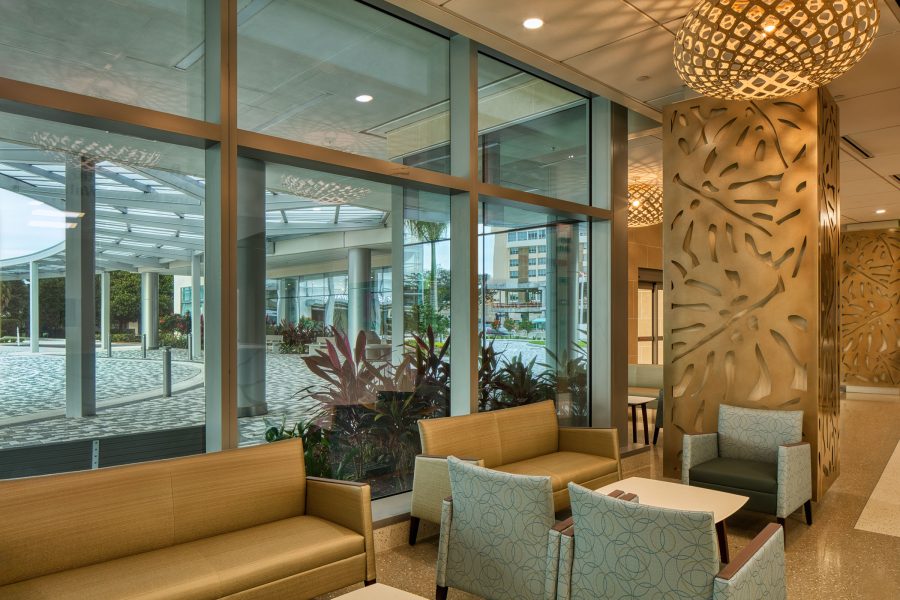
The health care project is largely inspired by nature, with tropical motifs and color palettes inspired by the ocean, vegetation, and sky. Photo by Steven Brooke, courtesy of NELSON Worldwide
When designing the three-story building, part of Baptist Health South Florida’s Boca Raton Regional Hospital, the team organized the clinical spaces in a “podular” layout. Instead of designing specialized rooms that only serve a single function, the architects set out to create universal rooms that can support a variety of medical specialties. “This gives doctors the ability to rotate various types of services and specialties without wasting valuable space,” Conesa says.
The layout of the building is inspired by design in the hospitality space for an elevated patient experience, with comfortable waiting areas, large windows that let in natural light, and finishes reminiscent of a boutique hotel.
At the same time, the South Florida theme pays homage to its local setting, with tropical motifs, color palettes inspired by the ocean, vegetation, and sky, and graphic elements that double as wayfinding devices. “We didn’t want patients walking through endless sterile corridors,” Conesa says.
Biophilic elements were also central to the design. Large curtain walls and window systems frame views of the greenery outside, while interior artwork references foliage and water. “Biophilia has been proven to be a tension-reducer and allows patients to have better reception to treatment,” Conesa says. “It’s not just decorative; it actually improves outcomes.”
Smart, Sustainable Systems
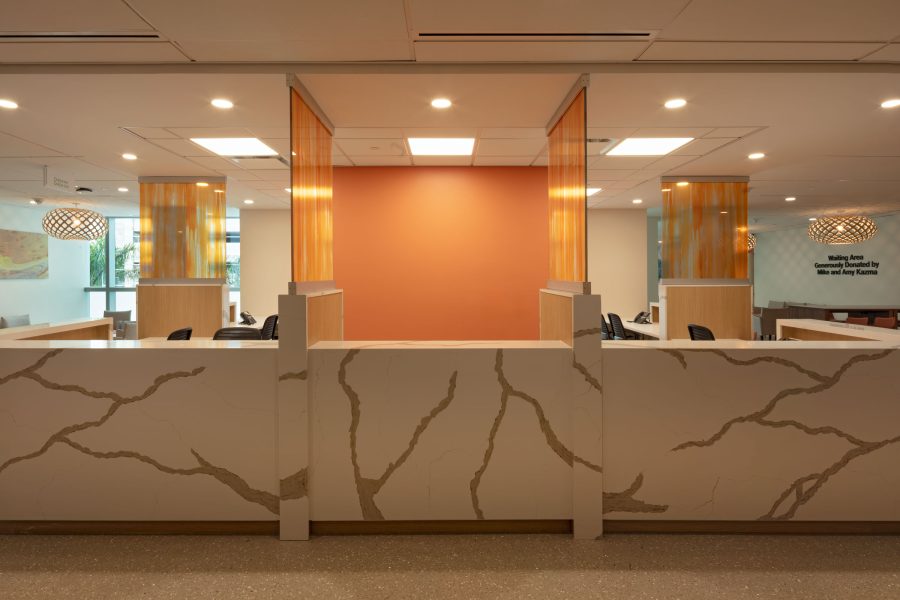
The new facility spans three levels and includes a top-floor ambulatory surgical suite with five state-of-the-art operating rooms and 16 dedicated recovery bays. Photo by Steven Brooke, courtesy of NELSON Worldwide
Sustainability also drove key design choices. The project is tracking LEED certification, with green specifications guiding materials, interior finishes, and system choices. Low-VOC products, high-performance glazing, and efficient MEP systems all reduce the project’s environmental impact while improving indoor air quality.
One of the most advanced features is the building’s dual-path air handling units. “They deliver supply air at the optimum temperature and humidity points without overcooling,” Conesa says. “That means less energy wasted reheating and better comfort.” Airside energy recovery systems further reduce energy demand by pre-cooling outside air with non-hazardous exhaust.
Stormwater management was another challenge in South Florida, which is prone to frequent flooding. An underground vault system below the entrance plaza captures and purifies water during a 100-year storm event before returning it to the municipal system. “It’s invisible to the eye but critical to resilience,” Conesa says.
Collaboration & Resilience
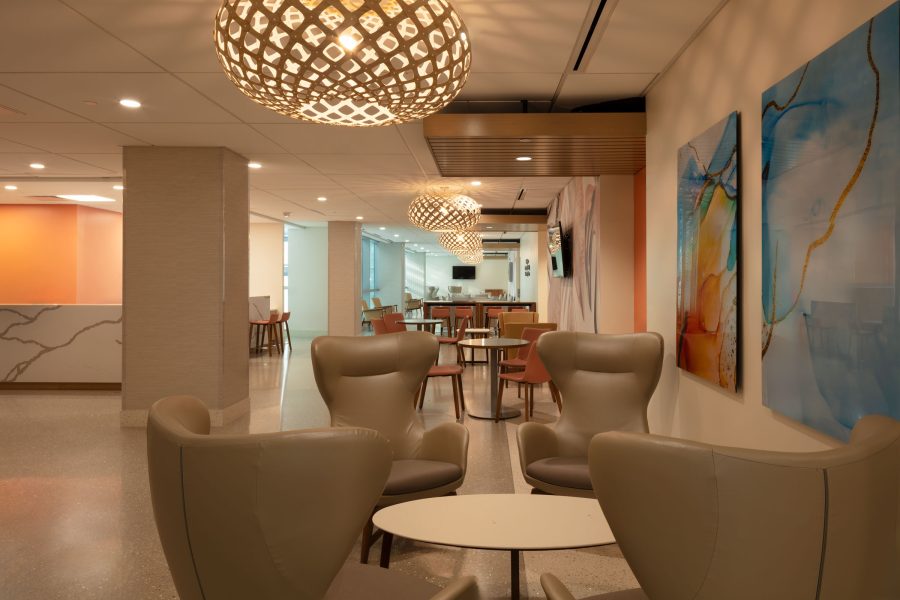
The layout of the building is inspired by design in the hospitality space for an elevated patient experience, with comfortable waiting areas, large windows that let in natural light, and finishes reminiscent of a boutique hotel. Photo by Steven Brooke, courtesy of NELSON Worldwide
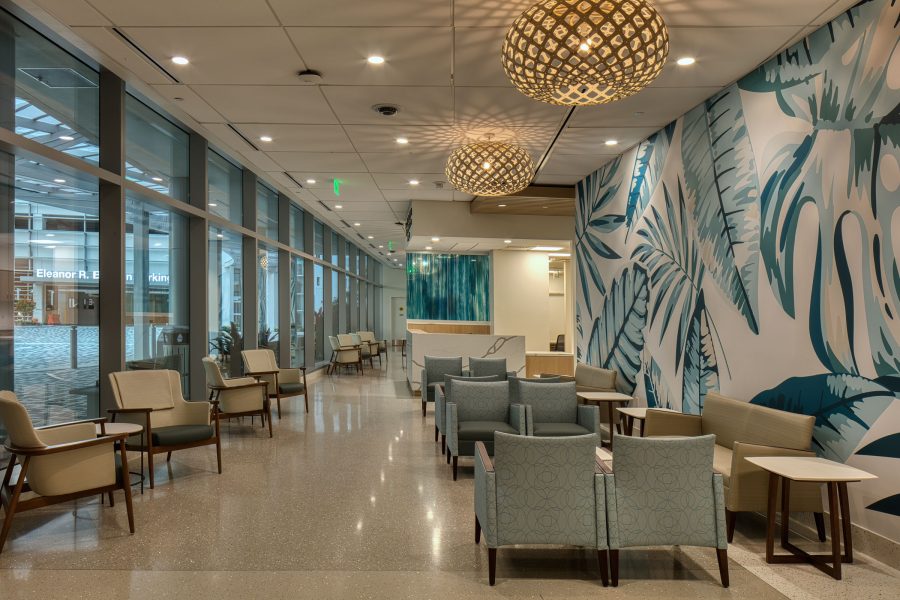
Graphic elements double as wayfinding devices at the new Medical Arts Pavilion. Photo by Steven Brooke, courtesy of NELSON Worldwide
The design process itself was a prime example of deep collaboration among the design team as well as client stakeholders. The team was midway through schematic design when the Covid-19 pandemic hit. Instead of pausing, they split the project into two packages—core and shell first, then tenant improvements later—to keep momentum despite lockdowns and permitting hurdles.
Throughout the process NELSON engaged everyone from physicians and administrators to maintenance and janitorial staff to get a better understanding of each of their needs and ensure the building worked for those who would occupy it. “When people at every level feel ownership of the design, they become ambassadors for the building,” Conesa says.

